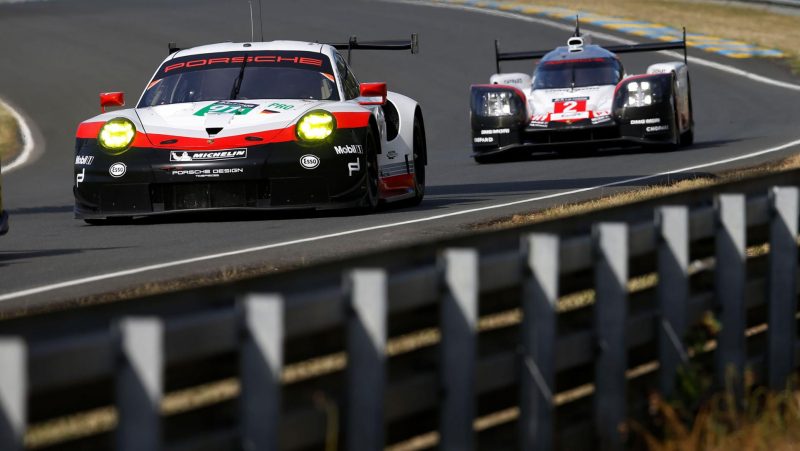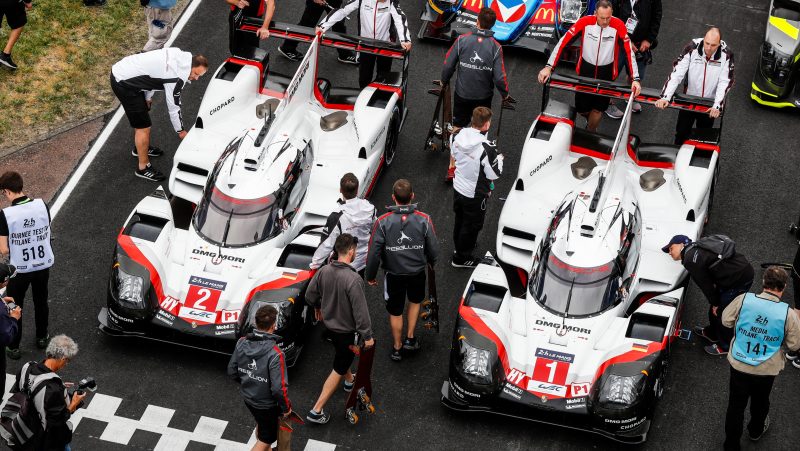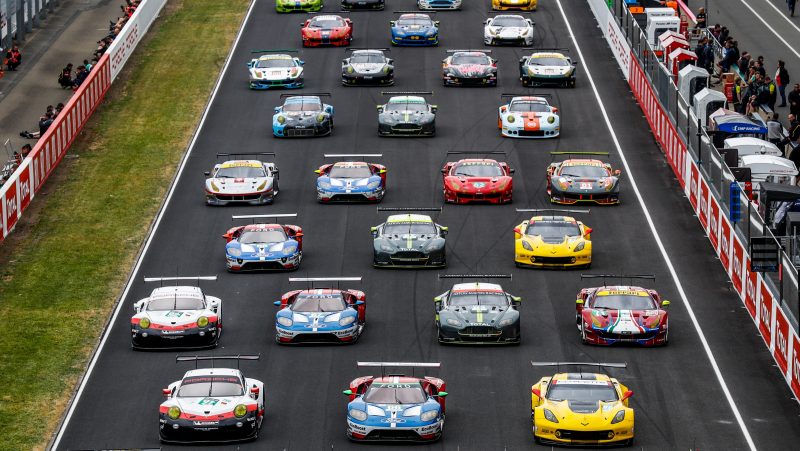The end of the 2016 24 Hours of Le Mans was a bit of a shock. Though Porsche achieved victory, Toyota’s mechanical failure late in the race was heartbreaking, even to a Porsche fan. The 2017 24 Hours of Le Mans field presents a very different picture to 2016, with the LMP1 field down to just six cars from nine. The two Audi entries are gone, as are the two Rebellion Racing cars. Toyota is entering three cars to last year’s two. The GTE-Pro cars are all new compared to last year. What should fans expect from this radically different field?

In the top category, Porsche’s lineup is exceedingly strong. Of their six drivers, five are former Le Mans overall winners. Where Toyota seems to be counteracting last year’s mechanical failure with strength in number (this is not to say their driver lineup is not strong), Porsche is putting forth their A-Game with a star-studded driver lineup with both Porsche and Audi alums. Though Porsche is the winnningest team in the history of the race, the absence of Audi, statistically the most successful team in recent history, will surely be felt.
The action will not be restricted to LMP1, however. GTE-Pro includes two 911 RSRs, piloted by a past Le Mans class winner and two podium-finishers. GTE-Am includes four 911s facing off against a massive onslaught of Ferrari 488 GTEs.
Porsche in LMP1
Let’s not mince words: The overall race winner will come from this category. “Production based” Porsches have beaten dedicated Sports Prototypes twice, once in 1998 with the 911 GT1, and once in 1979 with the 935K3 against a field of Cosworth DFV-powered prototypes.
For the third year, Porsche will field the 919 Hybrid, which they state has been heavily reworked for 2017, with more than 70% new components.

The driver lineup is also 50% new, with only Neel Jani, Brendan Hartley and Timo Bernhard held over from the 2016. Romain Dumas will be competing, albeit in an LMP2 Alpine, and neither Mark Webber or Marc Lieb will be competing in the 2017 race. The additions of André Lotterer, ex-Audi, and the re-inclusion of Earl Bamber and Nick Tandy, who both competed in 911 RSRs last year and the 919 in 2015, should provide an extremely strong lineup.
LMP1 Testing
In pre-race testing, Porsche was not the fastest in LMP1, that honor went to Toyota. Per team principal Andreas Siedel:
“We’ve had a mixed test day. We were focusing on race set-up and refrained from simulating qualifying. Although we didn’t achieve the mileage we wanted, we still learned important lessons for the race regarding tire choice and tire wear. Toyota’s speed was impressive, we could not match that. In the coming days, we will analyze today’s data and draw our conclusions to improve our cars’ performance. We, unfortunately, lost a lot of test time with our number 2 car. Due to an oil leak, we had to change the combustion engine over lunch. At 3:38 pm, after only two-and-a-half hours repair time, the car was back on track. What caused the leak is still to be analyzed but the team did a great job. Now we go full throttle on the road to the Le Mans race week.”
Though Porsche ran at race pace, rather than in full qualifying trim, it will be interesting to see how the apparent differences in pace bear out on the race weekend. Currently the split between the fastest Porsche and the fastest Toyota is just over half a second. Though Porsche has won before with a slower car, due to superior reliability (remember the 911 GT1’s victory in 1998?), these early results could indicate an uphill battle to come.
Porsche in GTE-Pro
2016 was difficult for Porsche in the GT classes. Though popular, the 911-based GT cars struggled against the latest from Ford and Ferrari. 2017 brings the mid-engined 911 RSR to La Sarthe for the first time; Porsche’s first mid-engined GT car at the race since the 911 GT1. The new RSR is a revolution in terms of 911 GT cars, and the revolution appears to be bearing fruit.

In a fearsome field featuring no less than four Ford GTs, three Ferrari 488s, two Corvette C7.Rs and two Astons, Porsche has been the fastest in testing. Take or leave what the purists think of the mid-engined 911 racer, the updates appear to be working perfectly.
The six drivers all had encouraging things to say after the test, notably Patrick Pilet, who found the test to be extremely useful:
It’s been one year since we drove at Le Mans. These tests were predominantly about seeing how the new 911 RSR reacts to this racetrack. My first lap at Le Mans with the brand-new car was a very emotional moment for me. We used this test day very well and we can confidently look forward to the race.
The six driver lineup includes Patrick Pilet, Richard Lietz, and Frédéric Makowiecki in the #91 car, and Michael Christensen, Kevin Estre and Dirk Werner in the #92.
GTE-AM
For 2017 the GTE-AM class cars are perhaps the most different to the pro cars they’ve ever been. Because of the way the rules are written, the GTE-AM machines are built to the 2015 pro rule set. This means not only are these cars running an older aero package, they are also running the traditional 911 rear-engine layout.
#TeamSpirit: The drivers of the @ProtonRacing #911RSR No 93 at #LEMANS24 will be @pLmotorsport @AbdulazizTF @mike_hedlund – @FIAWEC pic.twitter.com/2tyotpWAS1
— Proton Competition (@ProtonRacing) June 10, 2017
Four Porsches will be competing in GTE-AM, three fielded by Proton, and one by Gulf. This field includes Porsche factory driver Patrick Long, along with Abdualaziz Al Faisal and Mike Hedlund in the #93 car, Christian Ried, Marvin Dienst and Matteo Cairoli in the #77 Proton 911 RSR, Mike Wainwright, Ben Barker and Nick Foster in the #86 Gulf 911 RSR and Klaus Bachler, Stephane Lemeret andKhaled Al Qubaisi in the #88 Proton 911 RSR.
This class includes no fewer than eight 488 GTEs, three Aston Martin Vantage GTEs, and just one privateer Corvette C7.R. The fastest drivers in this class are every bit as fast as those in the Pro class, though the differences in the rules between GTE-Pro and GTE-AM will slow the cars down considerably compared to their counterparts in GTE-Pro. All of the cars in this class are running the older aero and slightly less power than the Pro cars, and are turning laps right around the four minute mark, about five seconds slower than the fastest pro cars.
Race Resources for Porsche Fans
TELEVISION SCHEDULE
Fox has promised to show the 24-hour race in its entirety on a combination of Fox Sports 1, Fox Sports 2, and Fox Sports Go. The race will be broadcast in full on Fox Sports Go. Compared to last year, the schedule is greatly simplified, and viewers will only need to jump from FS1 to FS2 and back once.
24 Hours of Le Mans, June 17-18th (all times ET and subject to change):
- FS1: June 17 – FS1 8:30 AM to 10:00 AM
- FS2: June 17-18th – FS2 1:00 PM to 1:00 AM
- FS1: June 18 – FS1 1:00 AM to 9:30 AM
